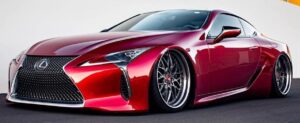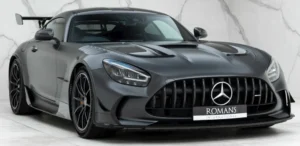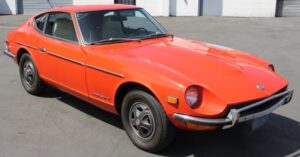The fastest and slowest depreciating GT cars: What to buy and avoid
1. The fastest and slowest depreciating front-engine GT cars
2. Lexus LC500: A surprisingly strong contender
3. Mercedes-AMG GT: Holding steady but with variations
4. Jaguar F-Type: A classic case of steep depreciation
5. Aston Martin Vantage: A safer bet in the British line-up
6. Ferrari Roma and California: The fastest depreciators
7. Ferrari 812 and F12: V12 powerhouses holding their ground
8. Nissan Z: A mixed bag depending on purchase timing
9. The takeaway: What should you buy?
The fastest and slowest depreciating front-engine GT cars
Grand Tourer (GT) cars with front engines are well-known for their luxurious blend of sportiness and comfort. However, they are equally notorious for their high depreciation rates, often costing owners tens of thousands of dollars in lost value over time. If you’re a car enthusiast or a value-conscious buyer, it’s crucial to know which GT models hold their value and which ones you should steer clear of if you care about resale value. Let’s dive into the data and analyze the performance of some of the most popular front-engine GT cars in terms of depreciation.
Lexus LC500: A surprisingly strong contender
The Lexus LC500 is a fan favorite, and its depreciation trends reflect a relatively stable performance. Both the coupe and convertible versions experienced slight value increases during the pandemic, with prices staying flat until mid-2022. Since then, values have declined, but the drop has been modest. Coupes have depreciated by an average of 8.3%, while convertibles saw a higher 11.3% drop, largely due to differences in model age.
Interestingly, older models, particularly those from 2018 to 2020, barely lost any value in the last six months. This suggests that the LC500 market is strengthening, with used cars selling faster and fewer discounts being offered. If you’re looking for a luxury GT with relatively low depreciation, the LC500 is definitely worth keeping an eye on.
Mercedes-AMG GT: Holding steady but with variations
The AMG GT has followed a similar pattern, with values declining since mid-2022 but showing signs of stabilization. Base models saw a 9.9% drop, while the higher-end S models depreciated by 9.4%, and the C models by 8.4%. However, the performance of the R variants was much better, with only a 3.9% decline for the standard R model and a 6.8% drop for the R Pro. That said, the R Pro market is small, and these numbers may not fully represent the broader market.
One notable detail is that base AMG GT models sell more quickly than their pricier counterparts, adding confidence to the depreciation trends for the base versions. If you’re after a car that balances performance and value retention, the AMG GT, particularly the base and R models, is a solid choice.
Jaguar F-Type: A classic case of steep depreciation
If you bought a new Jaguar F-Type recently, you might be feeling the sting of its notorious depreciation rates. The V6 Base and S models, being among the older variants, experienced relatively high depreciation, with Base models losing 12.7% and S models dropping 10.8%. Even the V8 variants didn’t fare much better, with the pre-facelift SVRs losing 5.8% and V8 Ss depreciating by 9%.
However, the newer V8 models have been depreciating at a more alarming rate, with Rs losing 15.6% and P450s falling by 12.6%. While the F-Type offers a thrilling driving experience, its depreciation makes it a risky choice for those concerned about long-term value.
Aston Martin Vantage: A safer bet in the British line-up
For those interested in British craftsmanship, the Aston Martin Vantage offers a more appealing depreciation rate compared to the Jaguar F-Type. The 4.3L and 4.7L Vantages have held their value reasonably well, with the 4.3Ls losing 6.6% and the 4.7Ls dropping 5.5%. Though these changes aren’t statistically significant, they show a steady market with low depreciation.
Ferrari Roma and California: The fastest depreciators
In the realm of Ferraris, the depreciation rates vary significantly depending on the model. The Ferrari Roma, for example, has been infamous for its steep depreciation. In the past year, it lost a staggering 15.6% of its value, equating to over $41,000. This rapid depreciation suggests that the Roma is still far from hitting its price floor.
In contrast, the Ferrari California fared better, with base models losing 8.1% and the California T dropping by 7.8%. However, the depreciation rates differ drastically depending on the year. Older Californias, particularly the 2010 and 2015 models, held their value well, while more recent models, such as the 2014 and 2018 versions, saw more substantial drops.
Ferrari 812 and F12: V12 powerhouses holding their ground
The Ferrari 812 Superfast and F12 Berlinetta represent a different story. The 812’s convertible variant has dropped from $750,000 to $570,000, while coupes fell from $450,000 to $370,000, resulting in depreciation rates of 8.6% and 9.3%, respectively. Although these are significant amounts in absolute terms, their percentage depreciation is relatively low compared to other Ferraris.
Meanwhile, the F12 Berlinetta has remained closer to its market peak, losing only 2.2% in the last year. This suggests a strong market for the F12, making it one of the better investments among high-end front-engine Ferraris.
Nissan Z: A mixed bag depending on purchase timing
The Nissan Z occupies a slightly different niche, straddling the line between a sports car and a GT. Its depreciation rate is highly dependent on when you bought it. Early buyers who paid above MSRP faced a brutal 20.6% depreciation in the last year. However, if you purchased at MSRP, the depreciation is a more palatable 11.1%. While the Nissan Z may not fully fit the GT mold, it’s worth considering for buyers who favor a sporty edge in their grand tourers.
The takeaway: What should you buy?
The data paints a clear picture: front-engine GT cars generally experience higher depreciation than other segments. On average, the depreciation rate for these cars hovers around 9.3%, compared to 7.4% for the broader luxury market. That said, some models fare better than others, and if you’re careful, you can minimize your losses.
Best Options for Value-Conscious Buyers:
- Lexus LC500: A well-rounded GT with modest depreciation and strengthening market trends.
- AMG GT (Base and R models): Stable depreciation rates, particularly for the R variant.
- Ferrari California: Older models are holding their value well compared to newer ones.
Models to Avoid for Now:
- Jaguar F-Type: High depreciation across the board, especially for newer models.
- Ferrari Roma: Extremely high depreciation with no bottom in sight.
- Nissan Z (Early Buyers): If you paid a premium, you’ll likely see significant losses.
While depreciation is inevitable, choosing the right front-engine GT can make a world of difference to your wallet. Be sure to keep an eye on market trends, and if you’re in the market for a GT car, choose wisely.
Inspired by the analysis of our friend @fourwheeltrader. Make sure you check his other videos https://www.youtube.com/@fourwheeltrader/featured.
Are you already a proud owner of a Mercedes, Jaguar F-Type, Nissan Z? If so, check out our selection of parts for this car at the following link:
https://octoclassic.com/product-category/mercedes-benz
https://octoclassic.com/product-category/jaguar/f-type
https://octoclassic.com/product-category/nissan
Photos sources: carscoops.com, romansinternational.com, blogspot.com, beautyandthebeast17775.blogspot.com, flickr.com, pinterest.com, jdch.nl














